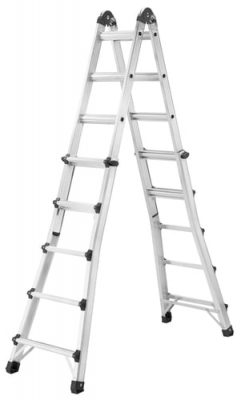There are plenty of tasks that require you to work at height, whether you’re cleaning your gutters at home or carrying out maintenance at work. But before you grab your ladders, think. Working at height is risky and falls are a common cause of injury and even fatality. However, you can reduce your risk of an accident by carrying out some essential ladder checks before you begin. Here are the ladder checks you should be doing every time you work at height.
Essential ladder checks
Check for any defects
You shouldn’t use a ladder if there are any signs of defects-don’t try and patch your ladders up temporarily. In particular, the rungs and steps are subject to a lot of wear and tear, so inspect them as part of your ladder checks.
Check the rungs and steps and make sure they:
- Have no bends, cracks or buckles
- Are firmly attached to the side rails,
- Don’t have any mud, grease, oil, paint or anything else that could make them slippery.
Check the side rails and make sure they:
- Do not have any cracks or splits,
- Are not twisted or distorted.
Check the feet
The feet should be an essential part of your pre-climb ladder checks because they prevent slipping.
Check that the feet are:
- Firmly in place on the bottom of the ladder,
- Free from damage or dirt.
As part of your routine, you should also remember to check that the locking mechanism is secure. You don’t want your ladder collapsing under you when you are working at height.
Think about the type of ladder you’re using when you’re doing your ladder checks
Certain types of ladders are prone to defects, so be aware of the things that could affect your ladders. For example:
- Wooden ladders should not have any rot, dampness, or decay.
- Make sure metal ladders are not rusty or corroded.
- Fibreglass ladders must be free from cracks and there’s no exposed fibreglass.
Check for environmental hazards
After your check that your ladders are safe to use. You now need to check the environment around you. Are there any hazards like obstructions, uneven ground, or overhead cables which will make ladder use unsafe?
Check that your ladder has the proper configuration
Last but not least on your list of ladder checks should be that you’ve set it up correctly. Always set up upon a firm, level surface and check that it’s set at the correct angle. Remember the 4:1 rule-for every 4ft of height, angle your ladder 1ft away.
We hope our guide to essential ladder checks will help you stay safe when working at height, why not check out our ultimate guide to ladder safety or even checking out the top working at height mistakes you need to avoid.




